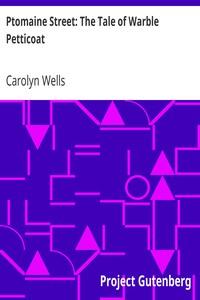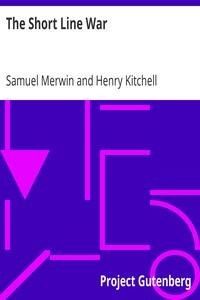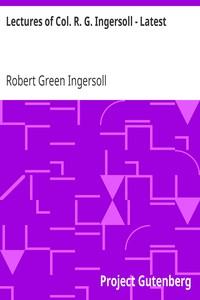Read this ebook for free! No credit card needed, absolutely nothing to pay.
Words: 69118 in 27 pages
This is an ebook sharing website. You can read the uploaded ebooks for free here. No credit cards needed, nothing to pay. If you want to own a digital copy of the ebook, or want to read offline with your favorite ebook-reader, then you can choose to buy and download the ebook.


: Hunger by Hamsun Knut Egerton George Translator - Authors Fiction; Norway Fiction; Hunger Fiction; Starvation Fiction; Urban poor Fiction Best Books Ever Listings
Translator: George Egerton
HUNGER
by KNUT HAMSUN
This PG edition is based upon the eighth printing, published in September 1921 by Alfred A. Knopf, Inc. This edition is a bowdlerised version of the original 1899 translation, also by George Egerton.
Knut Hamsun
Since the death of Ibsen and Strindberg, Hamsun is undoubtedly the foremost creative writer of the Scandinavian countries. Those approaching most nearly to his position are probably Selma Lagerl?f in Sweden and Henrik Pontoppidan in Denmark. Both these, however, seem to have less than he of that width of outlook, validity of interpretation and authority of tone that made the greater masters what they were.
His reputation is not confined to his own country or the two Scandinavian sister nations. It spread long ago over the rest of Europe, taking deepest roots in Russia, where several editions of his collected works have already appeared, and where he is spoken of as the equal of Tolstoy and Dostoyevski. The enthusiasm of this approval is a characteristic symptom that throws interesting light on Russia as well as on Hamsun.
Hearing of it, one might expect him to prove a man of the masses, full of keen social consciousness. Instead, he must be classed as an individualistic romanticist and a highly subjective aristocrat, whose foremost passion in life is violent, defiant deviation from everything average and ordinary. He fears and flouts the dominance of the many, and his heroes, who are nothing but slightly varied images of himself, are invariably marked by an originality of speech and action that brings them close to, if not across, the borderline of the eccentric.
In all the literature known to me, there is no writer who appears more ruthlessly and fearlessly himself, and the self thus presented to us is as paradoxical and rebellious as it is poetic and picturesque. Such a nature, one would think, must be the final blossoming of powerful hereditary tendencies, converging silently through numerous generations to its predestined climax. All we know is that Hamsun's forebears were sturdy Norwegian peasant folk, said only to be differentiated from their neighbours by certain artistic preoccupations that turned one or two of them into skilled craftsmen. More certain it is that what may or may not have been innate was favoured and fostered and exaggerated by physical environment and early social experiences.
Hamsun was born on Aug. 4, 1860, in one of the sunny valleys of central Norway. From there his parents moved when he was only four to settle in the far northern district of Lofoden--that land of extremes, where the year, and not the day, is evenly divided between darkness and light; where winter is a long dreamless sleep, and summer a passionate dream without sleep; where land and sea meet and intermingle so gigantically that man is all but crushed between the two--or else raised to titanic measures by the spectacle of their struggle.
The artist and the vagabond seem equally to have been in the blood of Hamsun from the very start. Apprenticed to a shoemaker, he used his scant savings to arrange for the private printing of a long poem and a short novel produced at the age of eighteen, when he was still signing himself Knud Pedersen Hamsund. This done, he abruptly quit his apprenticeship and entered on that period of restless roving through trades and continents which lasted until his first real artistic achievement with "Hunger," In 1888-90. It has often been noted that practically every one of Hamsun's heroes is of the same age as he was then, and that their creator takes particular pain to accentuate this fact. It is almost as if, during those days of feverish literary struggle, he had risen to heights where he saw things so clearly that no subsequent experience could add anything but occasional details.
Before he reached those heights, he had tried life as coal-heaver and school teacher, as road-mender and surveyor's attendant, as farm hand and streetcar conductor, as lecturer and free-lance journalist, as tourist and emigrant. Twice he visited this country during the middle eighties, working chiefly on the plains of North Dakota and in the streets of Chicago. Twice during that time he returned to his own country and passed through the experiences pictured in "Hunger," before, at last, he found his own literary self and thus also a hearing from the world at large. While here, he failed utterly to establish any sympathetic contact between himself and the new world, and his first book after his return in 1888 was a volume of studies named "The Spiritual Life of Modern America," which a prominent Norwegian critic once described as "a masterpiece of distorted criticism." But I own a copy of this book, the fly-leaf of which bears the following inscription in the author's autograph:
Free books android app tbrJar TBR JAR Read Free books online gutenberg
More posts by @FreeBooks

: Ptomaine Street: The Tale of Warble Petticoat by Wells Carolyn - Fiction; Lewis Sinclair 1885-1951 Parodies imitations etc.


: The Short Line War by Merwin Samuel Webster Henry Kitchell - Historical fiction; Railroads History Fiction






